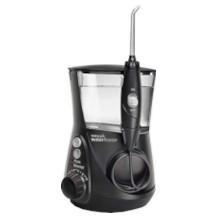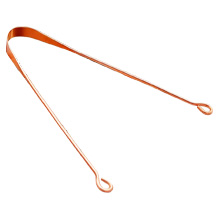Electric toothbrush purchasing advice: how to choose the right product
- What You Need to Know
- Electric toothbrushes remove plaque more efficiently than manual ones.
- They often offer additional features, such as gum massage.
- Sonic toothbrushes ensure particularly thorough cleaning without damaging the gums.
- To achieve the highest level of cleanliness, the right toothbrush, as well as the right brushing technique are necessary.
Daily Challenges for Teeth
Clean and healthy teeth form an important part of a well-groomed appearance. A radiant smile helps to guarantee that you make a successful first impression. However, as a result of our everyday habits, our teeth are constantly exposed to conditions that make thorough dental care necessary. It is unavoidable that food residue and bacteria form on our teeth during the day. This is called plaque, and it can lead to gingivitis, as well as tartar if not removed regularly. Since plaque often develops in difficult-to-access areas of the mouth, thorough daily cleaning is essential.
Electric toothbrushes enable particularly effective cleaning and leave you with a long-lasting clean and fresh feeling in your mouth. They also offer a range of benefits when compared to conventional toothbrushes.
Benefits of an Electric Toothbrush
An electric toothbrush largely reduces the need to actively brush. Instead, the head is simply moved gently along the surface of the teeth. Those who are a little slow in the mornings are particularly well advised to use an electric toothbrush. The practicality of an electric toothbrush is just one of the many things they have going for them. With an ordinary manual toothbrush, you can expect to achieve 300 to 600 movements per minute. A simple electric toothbrush, on the other hand, manages several thousand in the same period. Premium models are capable of achieving almost 50,000 movements per minute. These fast vibrations remove plaque much more efficiently than a manual toothbrush and help to protect teeth and gums in the long term.
Manual vs. Electric Toothbrushes
Proper dental care is not only important for cosmetic reasons, but it also contributes significantly to our physical well-being. If teeth become damaged, the resulting pain may prevent you from being able to eat certain foods.Inflammation in the mouth is not only unpleasant but can lead to complications if not treated. Choosing the right brush plays a large role in dental health. The best possible results can be achieved with an electric toothbrush used in the correct way.
If used correctly, an extremely high level of cleanliness is also achievable with a manual toothbrush. However, most of us who have used classic manual toothbrushes know that we tend to brush carelessly from time to time. The ease of use of an electric toothbrush can serve as an incentive to brush for longer in the morning and evening. To aid this further, many models offer interesting extras, such as timers or preset cleaning modes. Some models even remind users to switch sides. Another advantage of electric toothbrushes is that the brush head can be changed depending on what you are trying to clean.
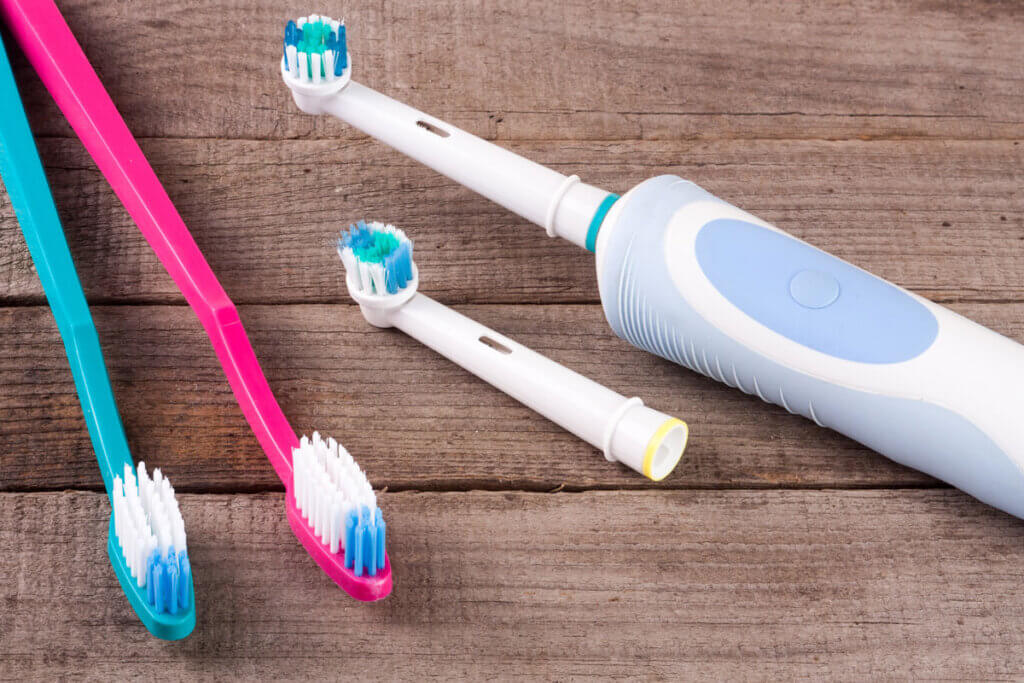
For these reasons, electric toothbrushes are proven to be an excellent alternative to manual ones. The oscillating and rotating bristles remove harmful plaque even from hard-to-reach areas of the mouth– doing so much more thoroughly than conventional manual toothbrushes. This particularly gentle brushing technique combined with the practical nature of an electric toothbrush can help to reduce the risk of gingivitis. Even though electric toothbrushes are significantly more expensive than manual ones, the decision to switch is more than worth it. Models capable of achieving great results are available for a reasonable price. The only thing missing with these models may be some of the added features.
Advantages
- Automatic cleaning Effective removal of plaque
- Thorough cleaning between teeth
- Many different features
- Various attachments provide cleaning flexibility
Disadvantages
- Expensive to buy with high maintenance costs
- High power consumption
What Types of Electric Toothbrush Are on the Market?
The term “electric toothbrush” can refer to three different technologies, all of which control the vibration of the brush head. They differ not only in the type of motion they create, but also in price. In addition to the widely used oscillating-rotating toothbrushes, there are also sonic, and ultrasonic models. All the models have benefits and drawbacks and are suitable for different people’s varied needs.
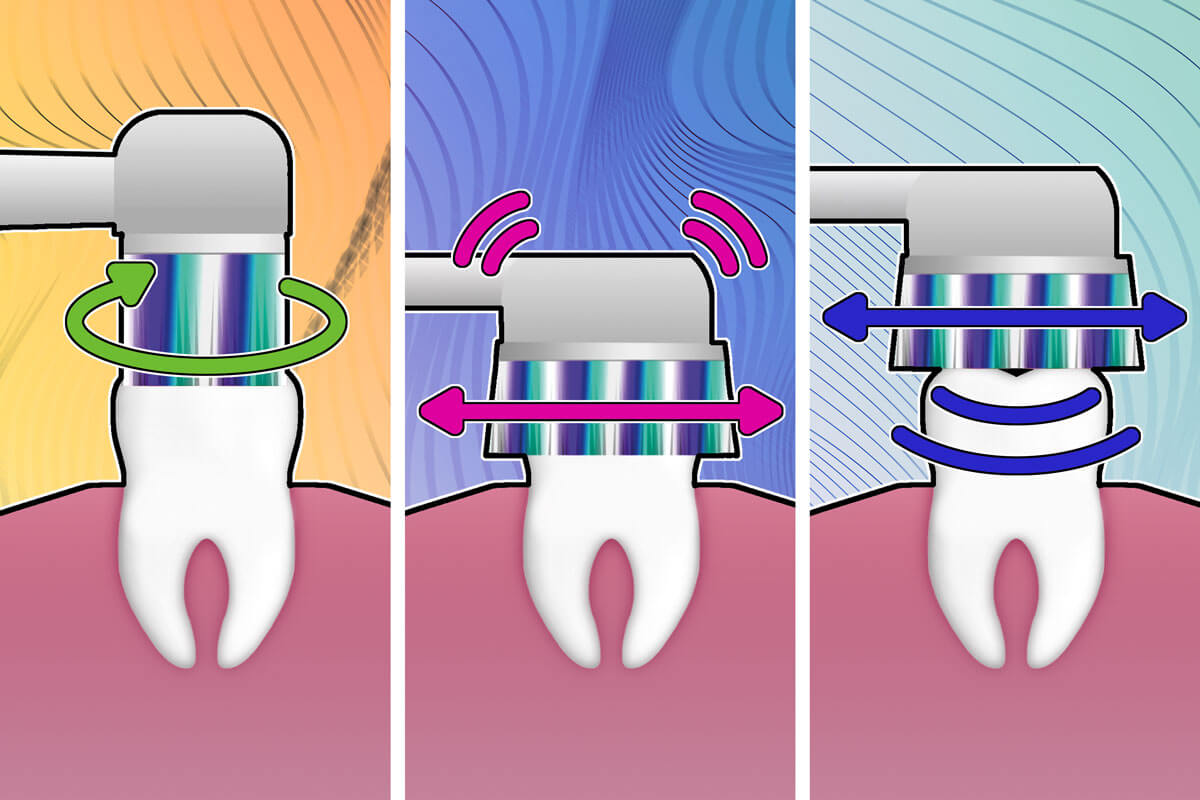
The All-Rounder: The Oscillating-Rotating Toothbrush
Among the various models, rotating toothbrushes – also called “oscillating toothbrushes” – represent the most common variety. These toothbrushes can usually be recognized by their typical rounded brush shape, which a small electric motor sets into rotating motion. Oscillating rotation means thatthe brush head does not rotate completely around its own axis, rather back and forth. By means of this oscillation, the brush polishes the tooth surface and removes plaque. Users do not need to perform brushing motions themselves– it’s enough to just hold the toothbrush against the tooth with light pressure. The rotating bristles are particularly suitable for cleaning hard-to-reach areas. That said, the risk of injury to the gums is higher with rotary toothbrushes than with sonic ones. As a result, some models have sensors that sound an alarm if too much pressure is applied.
Compared to other electric toothbrushes, rotating devices are characterised by their low price. You can get a fully-equipped, top-class toothbrush for as little as £45. In terms of cleaning technology, however, rotary devices are considered somewhat outdated. Compared to sonic and ultrasonic toothbrushes, their speed of motion is low– between 9,000 and 10,000 movements per minute in top-of-the-range models. Among the three technologies described here, rotation is the least efficient, but still far more effective than a manual toothbrush. The selection of special features also does not compare favourably. Special programs for sensitive gums, for example, are rarely found in a rotary device.
Advantages
- Many affordable models
- Effective removal of plaque
- Simple to operate
Disadvantages
- Risk of gum injury under too much pressure
- Relatively time consuming
The Choice for Sensitive Teeth: The Sonic Toothbrush
Unlike rotary toothbrushes, these toothbrushes use a sonic converter to vibrate the bristles. This means that, despite the name, it is not sound at all that removes plaque. Here, the elongated brush head doesn’t move in a rotating manner, rather it swings back and forth quickly. This means a significantly higher frequency of movement and, accordingly, improved oral hygiene. A conventional sonic toothbrush achieves 30,000 movements per minute, while high-quality models can achieve up to 60,000. As a rule, sonic toothbrushes are somewhat more expensive than rotary models.
The high frequency motion of sonic toothbrushes is not necessarily accompanied by additional stress on the gums. The vibration system exerts mild pressure on the teeth, ensuring that the gums and enamel are protected. When buying a new sonic toothbrush, it is nevertheless important to pay attention to the intensity of the vibrations. If it is set too high, the toothbrush can create a somewhat uncomfortable sensation in the mouth and jaw. If your teeth are particularly sensitive, it’s advisable to buy a device where the intensity levels are adjustable.
Advantages
- Effectively loosens plaque
- Large surface area of bristles
- Gentle for the gums
Disadvantages
- More expensive
- Vibrations can be uncomfortable at first
The Premium Model: The Ultrasonic Toothbrush
The latest development in the field of electric teeth cleaning is the ultrasonic toothbrush. It does not clean teeth by mechanical brushing, rather with the help of generated air vibrations. When used in combination with a special toothpaste, microbubbles are created on the teeth which, when they burst, remove the dirt from the tooth’s surface. Ultrasonic toothbrushes achieve vibration speeds of up to two million movements per minute. This technology promises brighter and healthier teeth, as well as more thorough overall oral hygiene.
Ultrasonic toothbrushes require the user to get used to something new. This is because brushing works fundamentally differently from what we’re used to with manual toothbrushes and other electric toothbrushes. During use, the ultrasonic toothbrush is held against each tooth for a few seconds, and no friction or pressure is applied. The toothbrush alone takes over the cleaning. Brushing may take a little longer, but it is gentler on teeth and gums.
Among electric toothbrushes, ultrasonic toothbrushes are the most expensive. Mid-range models are available for £130 to £170. For top-of-the-line devices, the price can be up to £430. The special toothpaste needed for ultrasonic toothbrushes is also significantly more expensive than conventional alternatives. In addition, the choice of models for this new technology is still quite limited.
Advantages
- High vibration frequency
- Most thorough cleaning
- Gentle cleaning
Disadvantages
- Expensive
- Special toothpaste needed
Things to Look Out for When Buying an Electric Toothbrush
In addition to the cleaning technology, criteria such as battery life and power requirements also play an important role in selecting a suitable electric toothbrush. Brushes usually offer at least two cleaning modes, with more expensive models boasting further special features. Most manufacturers offer special brush heads for cleaning certain parts of the mouth.
Long-Lasting Clean: The Battery Performance
The longer the battery of an electric toothbrush lasts the better. This is an important criterion, especially for people who travel a lot, as there is not always a power outlet nearby. In terms of battery performance, nickel-metal hydride (NiMH) batteries are somewhat weaker than lithium-ion batteries. A rotating toothbrush with NiMH battery usually needs to be recharged after about seven days. Electric toothbrushes with lithium-ion batteries, on the other hand, can last up to six weeks.
How long a battery actually lasts depends on how you use the device. The manufacturers assume a daily use of four minutes when specifying the maximum battery life.
Save Time with a Water-Resistant Toothbrush
Many people brush their teeth in the shower to save time in the morning. Those who switch from a manual toothbrush to an electric model may wonder whether they can continue this habit. The abbreviation IP for “International Protection” indicates to what degree electrical devices are protected
from water. For use in the shower, an electric toothbrush should be certified at least IPX7. The higher the number at the end, the more waterproof a device is.
Fast, Faster, Fastest: Cleaning Speeds in Focus
The cleaning performance of an electric toothbrush depends largely on the vibration frequency. The more movements a brush head makes per minute, the better the result. A rotating toothbrush achieves 4,000 to 20,000 vibrations per minute. Sonic toothbrushes oscillate much faster, with up to 60,000 movements per minute. Ultrasonic toothbrushes, meanwhile, are clearly out in front. They manage several million oscillations in the same time frame. Cleaning with a high-powered device helps to create dynamic fluid flows in the mouth that flush out the spaces in between teeth.
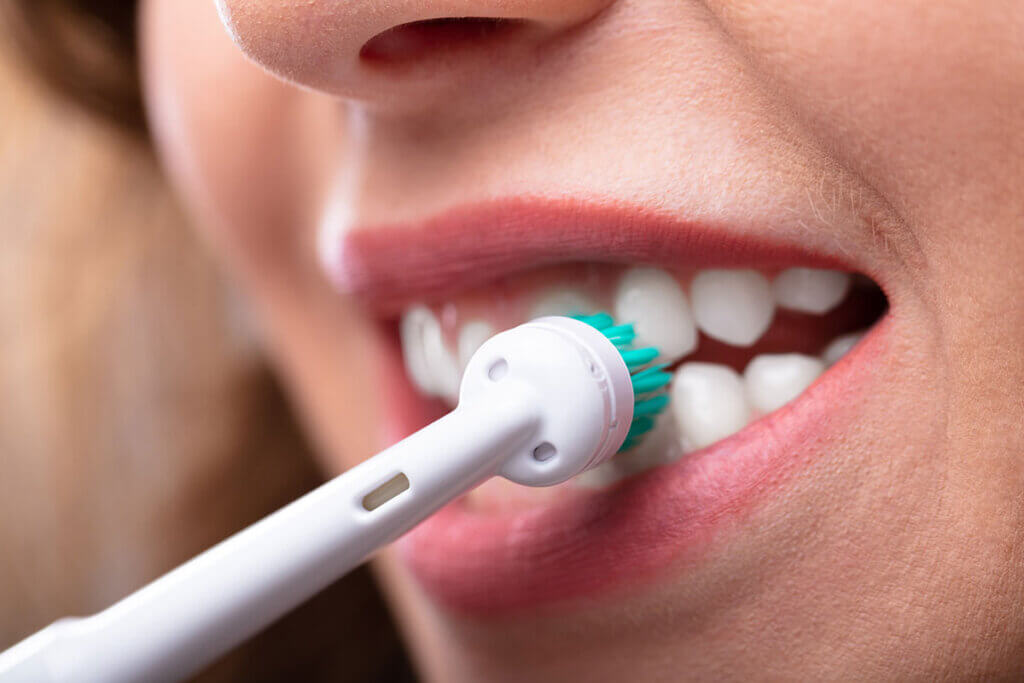
Cleaning Modes: Standard, Gentle, or Polish?
Most electric toothbrushes have different cleaning modes which allow users to choose their preferred methodofcleaning. Common modes include: polishing, gum massage, or a particularly gentlecleaning mode. For most people, however, the standard mode is perfectly sufficient. Each additional function comes at a higher price, so consider which modes are important for you personally.
| Mode | Result |
| Deep cleaning | Longer cleaning time produces better results |
| Sensitive | Slower operation for gentler cleaning |
| Massage | Massage of the gums |
| Lightening | Varying speeds has the effect of polishing |
| Tongue cleaning | Cleaner tongue |
Mixing It Up: Different Brush Heads
It is also important for healthy oral hygiene that you feel comfortable with the bristles of the toothbrush. Luckily, there is type of attachment for everyone.
As with manual toothbrushes, the first question to ask about electric toothbrushes is about the hardness of the bristles. People who have sensitive teeth or gums, or who are recovering from dental surgery, should choose soft or extra-soft bristles. Dentists point out that hard bristles are no more effective at removing plaque than soft ones.
With electric toothbrushes, users can choose from a variety of attachments. These attachments come with bristles in different shapes and lengths that are adapted to specific toothbrushing techniques. An example of this would be angled bristles that reach deep into the interdental spaces, ultra-thin bristles, or special attachments for people who wear braces.
Attachments are usually not compatible across manufacturers. As a result, when you decide on a toothbrush, you also commit to buying the accessories from that manufacturer.
Tips for Proper Use
Even with an electric toothbrush, it’s recommended that you brush your teeth for at least two minutes every morning and evening. Approximately 30 seconds are estimated for each quadrant of the mouth.
Many electric toothbrushes signal that it is time to switch sides by briefly stopping. After brushing, it is advisable to clean the toothbrush. Rinse the handle and brush attachment under running water after each use and then allow both to air dry thoroughly. The brush head should be replaced about every three months. Some manufacturers’ brushes signal that they need to be changed through bristles which fade in colour.
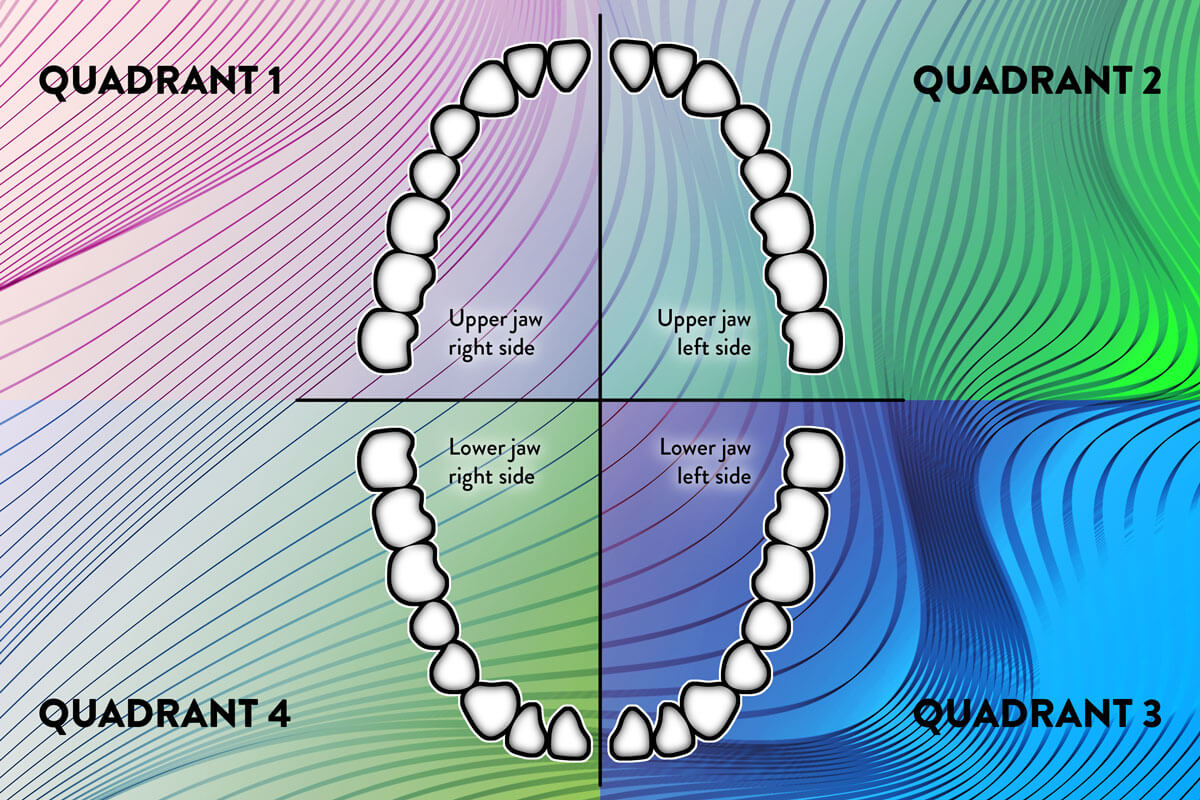
Proper Cleaning Technique
Although you no longer need to scrub as aggressively, electric toothbrushes won’t do all the hard work for you. Make sure that each tooth receives some attention and try to follow a plan. A three-point cleaning plan can be of particular use here:
- Start with the surfaces of the teeth which are used for chewing.
- Move onto the outer surfaces of the teeth.
- Finish off with the inner surfaces.
When using an electric toothbrush, it is not necessary to press hard or to scrub. The brush automatically provides the brushing motion, and therefore only needs to be guided along the surface of the teeth. If you are in the habit of pressing too hard on your teeth while brushing, you should think about purchasing an electric toothbrush with pressure control. Brushing techniques differ depending on the type of electric toothbrush.
Oscillating-rotating toothbrushes have a round brush head which should be used to brush each tooth individually for a few seconds. The brush head is guided along the gumline parallel to the teeth. Swivel the brush head so that you also reach the spaces in between the teeth.
Like classic manual toothbrushes, sonic toothbrushes have an elongated brush head that grips several teeth at once. Just like a manual toothbrush, it is held to the gums at a 45-degree angle. Remain there briefly to loosen plaque and then brush up from the gums toward the teeth to remove it.
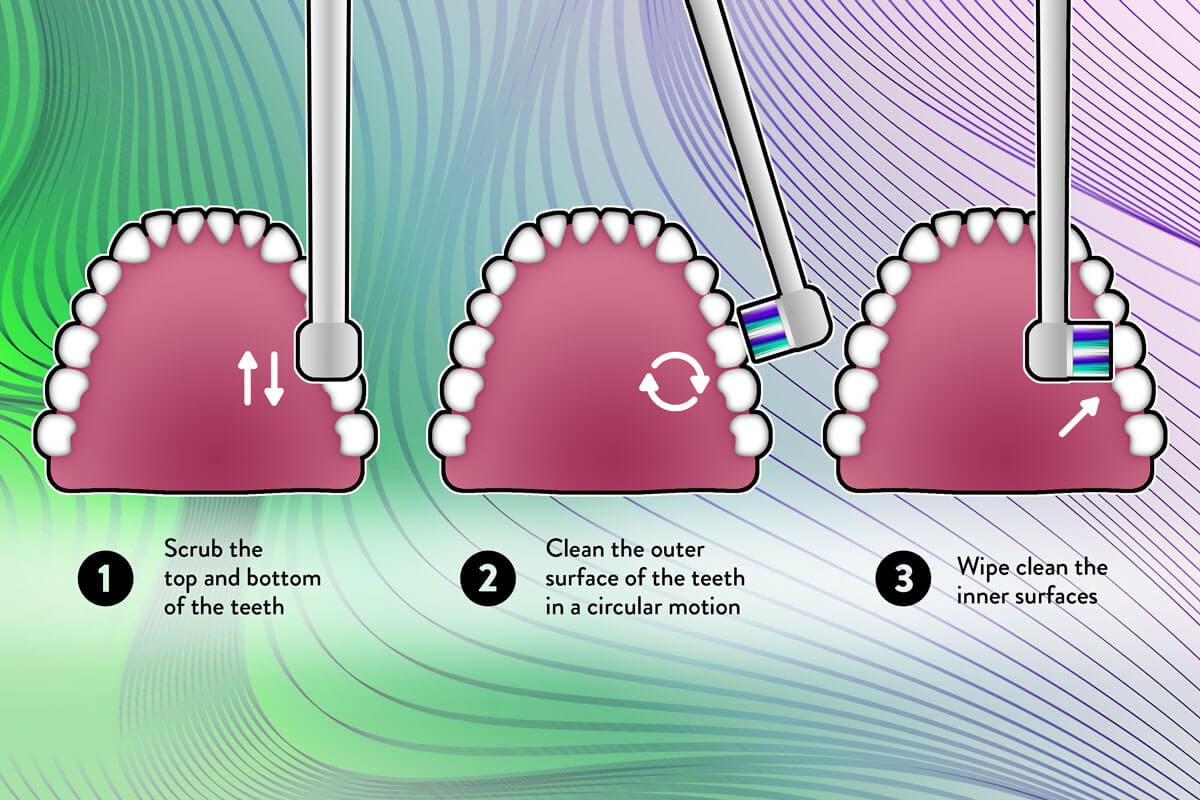
After brushing, remember to thoroughly clean the spaces between the teeth. Dental floss or interdental brushes are suitable for getting in between the narrow gaps. Regularly cleaning between your teeth reduces the risk of germs settling and attacking the gums or teeth. Sonic toothbrushes are capable of cleaning between the interdental spaces particularly well. The high-frequency movements generate streams of liquid in the mouth that flush bacteria out from between the teeth.
Do Electric Toothbrushes Cause Gums to Bleed?
Due to the high-frequency motion of electric toothbrushes, a lot of people are afraid that they can damage tooth enamel and gums. When switching from a manual toothbrush to a rotating one, gums may indeed bleed initially. Normally, however, the gums become accustomed to the new brushing sensation after one to two weeks. When used correctly, electric toothbrushes are gentler on the gums than manual toothbrushes because they exert less pressure. This reduces gum irritation and possible damage to the teeth from brushing. Electric toothbrushes with a gentle cleaning mode are particularly suitable for people with sensitive gums. The brush can even be equipped with an extra-soft brush head if needs be.
Optimal Care for Brace Wearers
Plaque and food debris find additional places to accumulate when you wear braces. Brackets and wires do not pose as great of an obstacle to an electric toothbrush as to a manual one. On the contrary, electric toothbrushes reach and clean these areas particularly effectively. Many manufacturers offer special brush heads designed for cleaning around braces. Sonic toothbrushes are recommended for braces wearers. With their high-speed vibrations, they clean between narrow spaces very thoroughly.

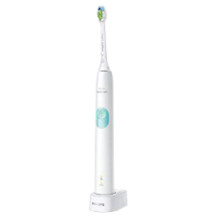
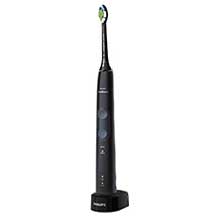
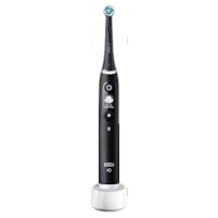
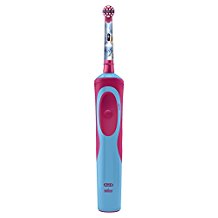

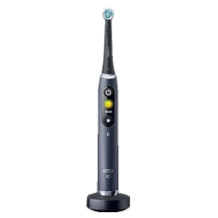
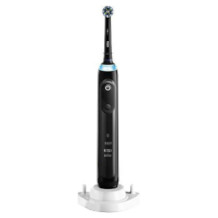
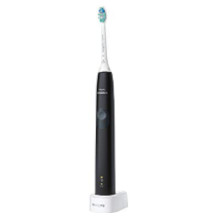

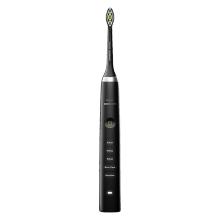
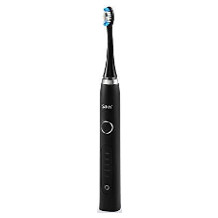
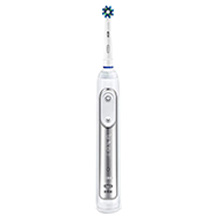
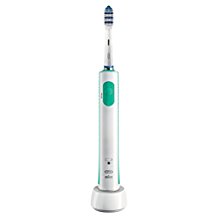
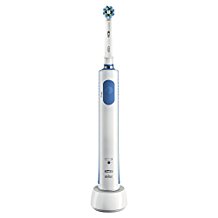
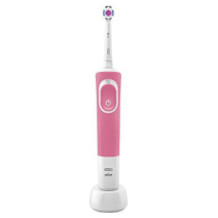
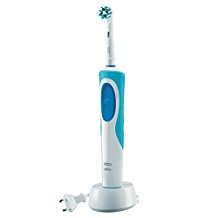
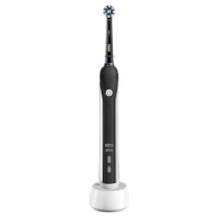
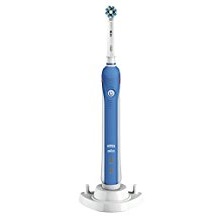

 1,811 reviews
1,811 reviews

